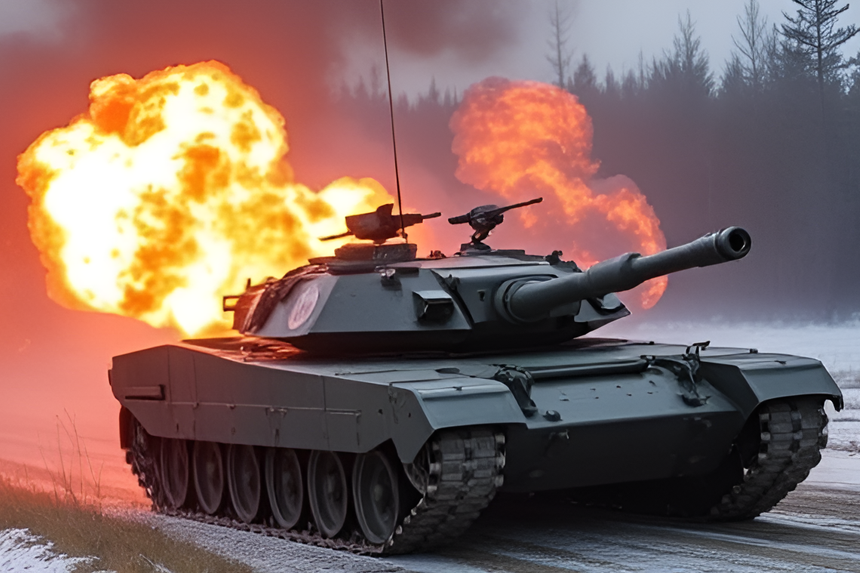Assessing the Impact of Ukraine's Surprise Raid
Washington is dealing with the repercussions of Ukraine’s daring attack on Russia’s Kursk territory because the full consequences of President Zelensky’s brave risk are showing themselves. US authorities are keenly assessing how this invasion would change the political and military dynamics of the continuing battle and affect Washington’s changing position on the deployment of American-provided weaponry.
Surprising both Russian and Western authorities, the attack highlights one of the most delicate issues confronting the defense of Ukraine sponsored by Westerners. Aiming continuously to equip Kyiv to oppose Russia’s incursion, President Biden has avoided direct American escalation with Moscow. Meanwhile, President Putin has worked to present the conflict as a battle between Russia and the West. Mr Biden has responded by trying to curtail US engagement to blow that story flat and stop more escalation.
A High-Risk Gamble with the Kursk Offensive
Military analysts characterize Ukraine’s Kursk incursion as the most significant foreign military intrusion into Russian territory since World War II, so it raises serious issues for the White House. Important questions include whether this operation crosses Russia’s red lines on Western engagement and whether it stretches Washington’s policies on the usage of American and NATO weaponry systems.
A military analyst notes, “It’s a daring gamble.” “The scale and audacity of this incursion challenge the hitherto established limits on how far Ukraine can use Western-supplied arms.”
Reportedly comprising between 5,000 and 12,000 Ukrainian troops, the extent of the attack is such that Ukrainian forces have advanced up to 30 kilometers into Russian territory. Kyiv says it has seized hundreds of POWs and rules 1,000 square kilometers, including over 70 towns and villages. On the other hand, Russian officials claim that around 132,000 people have left the area.
The US Response with Cautious Support and Policy Boundaries
The whole effect of the Kursk assault is yet unknown to US authorities. Although the White House insists that Ukraine provided no early notice of the operation, there is an apparent tacit agreement for the deployment of American weaponry in the attack. Maj. Gen. Patrick Ryder, a Pentagon spokesman, said: “We evaluate that they fall under the policy limits we have set. Regarding the use of US weaponry, such policies have not altered.
Pentagon spokesman Sabrina Singh stressed, “We don’t support long-range attacks into Russia,” despite the apparent approval. These are for crossfire, more specifically. I am not going to assign a precise range to them. This remark captures the cautious attitude of the government on Ukraine’s operating restrictions, therefore emphasizing acts “in proximity to the border.”
Former general staff spokesperson for the Ukrainian armed forces Vladislav Seleznyov said that the success of the assault depended critically on US-provided HIMARS rocket launchers, therefore highlighting the dependence on Western military help.
Biden's Evolving Stance on Arms and Border Strikes
Still crucial is the US’s position as the biggest weapons supplier to Ukraine. The Pentagon approved its 63rd delivery of weaponry only last week, comprising artillery rounds and Stinger missiles. Initially opposing the provision of modern weapons—such as HIMARS rockets, Patriot missile defense systems, and F-16 fighter jets—President Biden’s policy has changed to finally authorizing these deliveries under specific conditions.
Biden’s government has been marked by a measured and slow approach from the beginning of the Russian invasion. Biden first resisted approving sophisticated weaponry, but subsequently, with restrictions, he approved the use of US weapons to strike over the border into Russia. In June, Biden said, “We are not authorizing strikes 200 miles into Russia, and we are not authorizing strikes on Moscow, on the Kremlin.”
Biden granted authorization to strike any place along the border where Russian forces were getting ready to attack Ukraine in response to continuous demands by President Zelensky and certain European partners for further leeway. Demand to target farther into Russia using long-range missiles has been denied, though.
The Dilemma of Escalation and Strategic Risks
For US strategy, the Kursk offensive offers hitherto unheard-of difficulty. It is a cross-border ground attack breaking past operating restrictions. Although US officials have been reluctant to go public with the specifics, they are indeed assessing the broader consequences for the dynamics of the battlefield, the course of the conflict going forward, and any changes in Putin’s strategic calculations.
President Biden’s posture may be summed up as follows: Ukraine has the autonomy to defend itself using American weaponry, including limited cross-border operations, but it must operate within well-defined limits, including constraints on long-range missile employment.
The Kursk incursion signals a new chapter in the conflict and challenges US strategy, undermining this framework. It is unknown how Zelensky’s audacious action will affect the local battlefield and the larger geopolitical scene as the scenario unfolds.
The Kursk attack is a stunning illustration of President Zelensky’s high-stakes approach if he aimed to prove he could get President Biden and Vladimir Putin to rethink their stances. It is still a bold risk, and it may have significant effects on the course of the war.








